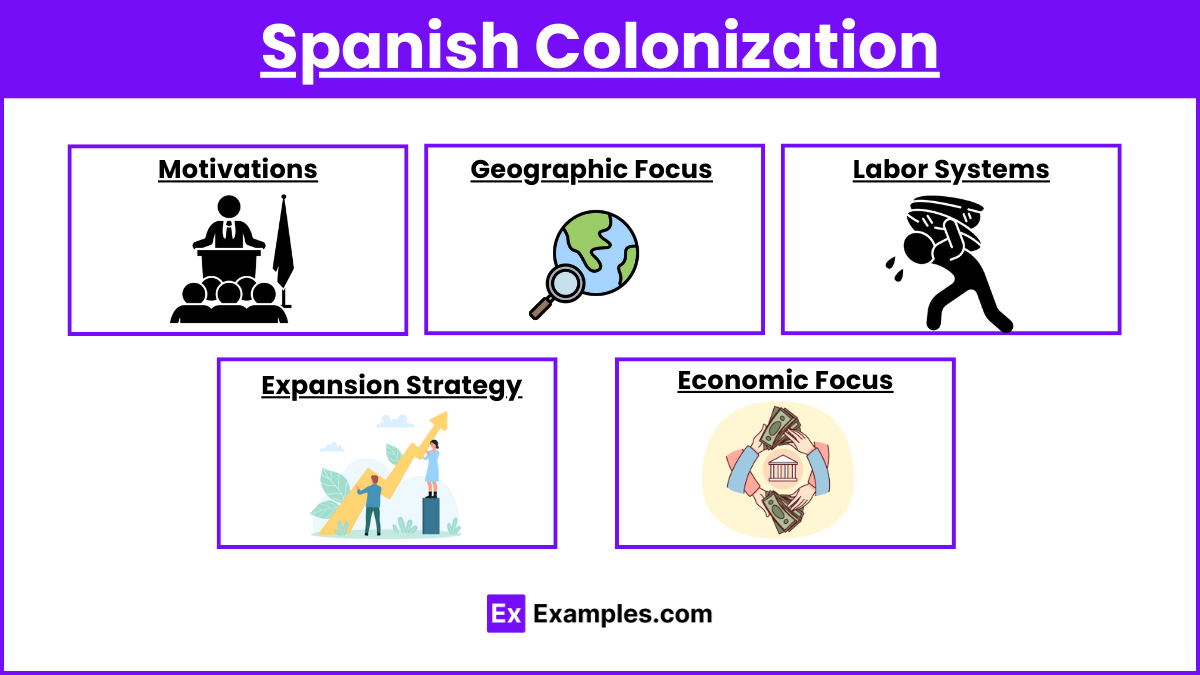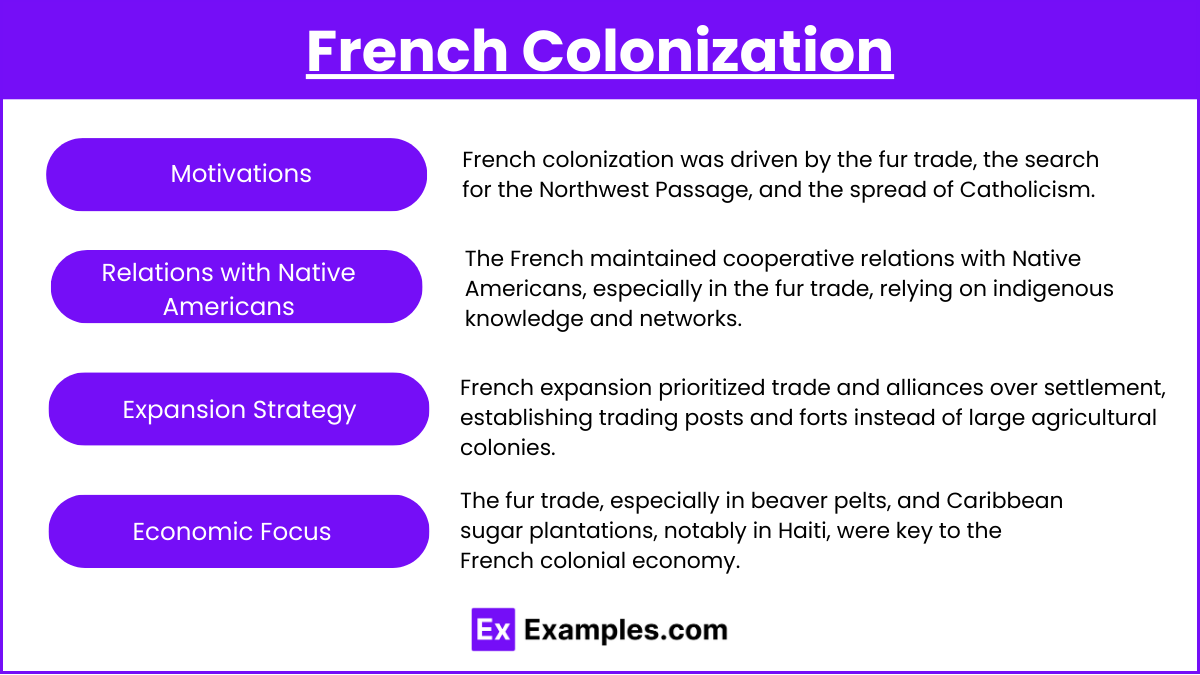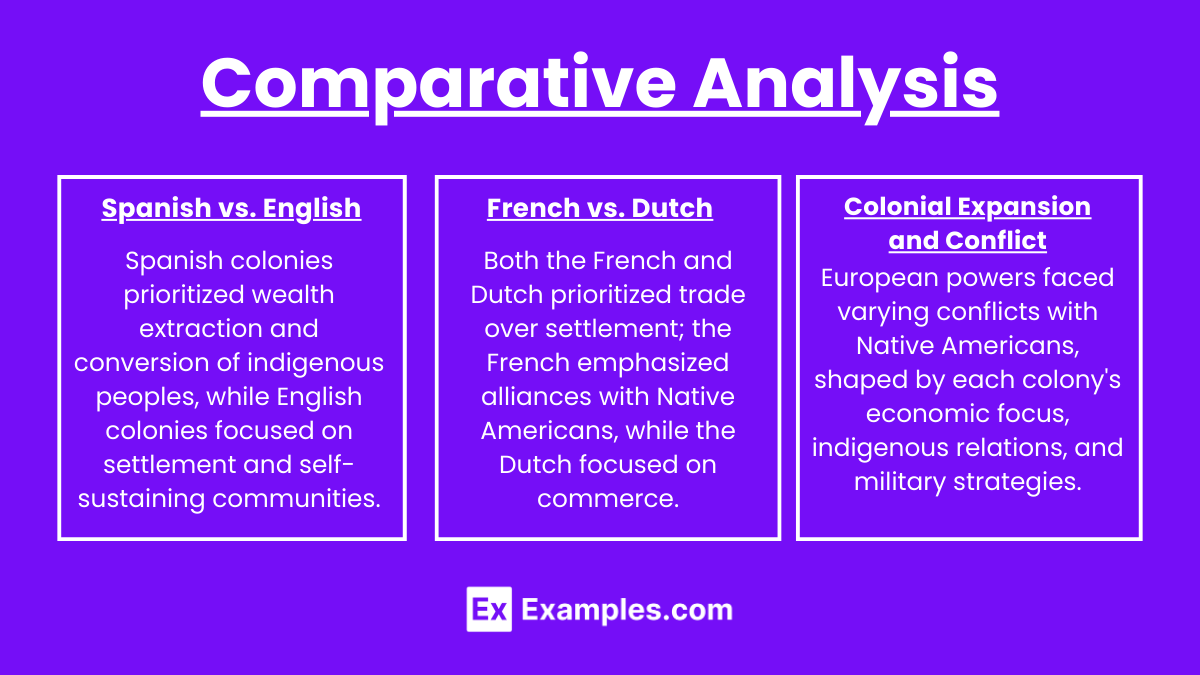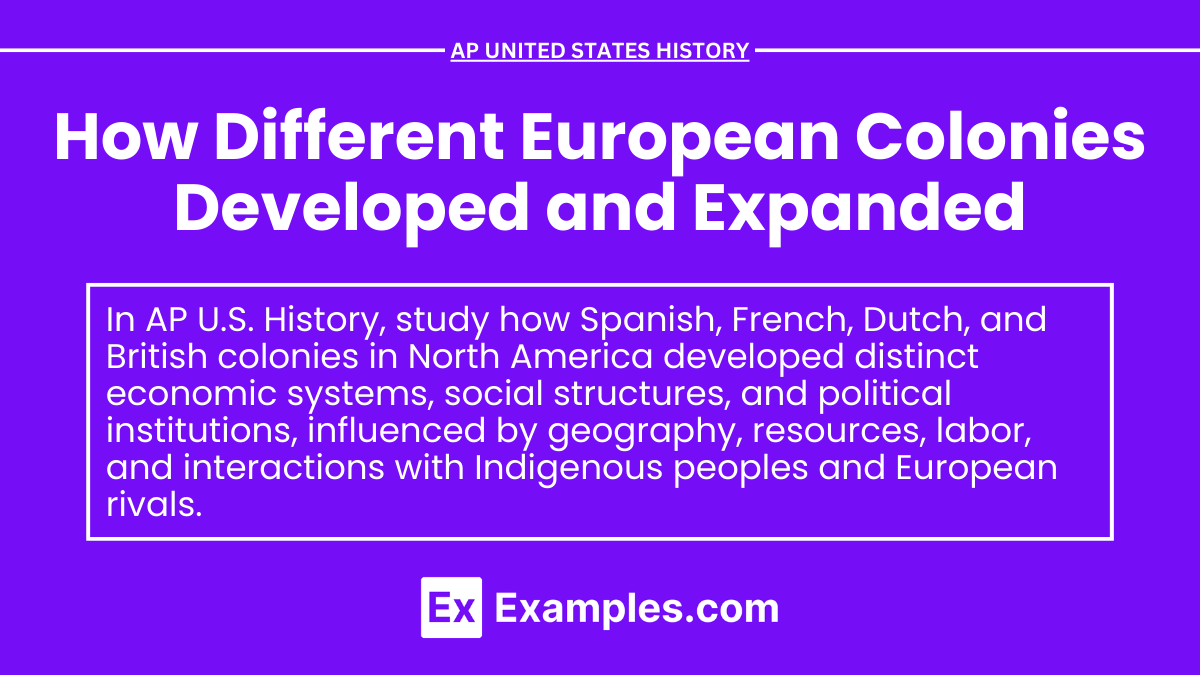In AP United States History, the study of how different European colonies developed and expanded reveals the varied motivations, strategies, and impacts of colonization in the Americas. Spain, France, England, and the Netherlands each pursued distinct approaches based on their economic goals, geographic focus, and interactions with indigenous peoples. These differences shaped the political, social, and economic landscapes of the New World, leading to diverse colonial societies that would eventually influence the formation of the United States.
Learning Objectives
In studying how different European colonies developed and expanded, you will be introduced to the distinct motivations and strategies of Spain, France, England, and the Netherlands in the Americas. The varying approaches to settlement, trade, and relations with indigenous peoples will be explored. You will also examine the economic and social structures established by each colonial power and understand how these differences shaped the development of colonial societies and influenced the eventual formation of the United States.
Spanish Colonization

Motivations: Spain’s colonization was driven primarily by the search for wealth, particularly gold and silver, as well as the spread of Christianity.
Geographic Focus: Spanish colonies were established in the Caribbean, Mexico, Central and South America, and parts of the present-day United States (Florida, California, and the Southwest).
Labor Systems: The Spanish used the encomienda and later the repartimiento systems to extract labor from indigenous peoples. They also relied heavily on African slavery, especially in the Caribbean.
Expansion Strategy: Spanish expansion was characterized by the establishment of missions, presidios (military forts), and settlements. They sought to integrate indigenous populations through conversion to Christianity, although this often led to resistance and conflict.
Economic Focus: The Spanish colonies relied on mining, especially silver, and plantation agriculture. Wealth extracted from the colonies fueled Spain’s empire in Europe.
French Colonization

Motivations: French colonization was driven by the fur trade, the search for the Northwest Passage, and the desire to spread Catholicism.
Geographic Focus: The French established colonies in Canada (New France), the Great Lakes region, the Mississippi River Valley, and the Caribbean (Haiti).
Relations with Native Americans: The French developed relatively cooperative relations with Native Americans, particularly in the fur trade, where they relied on indigenous knowledge and networks.
Expansion Strategy: French expansion was less focused on settlement and more on trade and alliances with Native American tribes. Their sparse settlements included trading posts and forts rather than large agricultural colonies.
Economic Focus: The fur trade, particularly in beaver pelts, was the backbone of the French colonial economy. Sugar plantations in the Caribbean, especially in Haiti, also became crucial to the French economy.
English Colonization

Motivations: The English were motivated by the search for wealth, religious freedom, and the desire to establish permanent settlements.
Geographic Focus: English colonies were established along the Atlantic coast of North America, from New England to the Southern colonies, as well as in the Caribbean.
Labor Systems: The English colonies relied on a mix of indentured servitude and African slavery. In the Southern colonies, plantations producing tobacco, rice, and later cotton became dependent on enslaved labor.
Expansion Strategy: English colonization was characterized by large-scale settlement and the establishment of self-sustaining communities. This led to conflicts with Native Americans as settlers encroached on indigenous lands.
Economic Focus: The economy of the English colonies varied by region. New England focused on shipping, trade, and small-scale farming; the Middle colonies on grain production; and the Southern colonies on cash crops like tobacco.
Dutch Colonization

Motivations: Dutch colonization was driven primarily by trade and profit, particularly in the fur trade and sugar plantations.
Geographic Focus: The Dutch established colonies in the Caribbean, South America, and the Hudson River Valley (New Netherland, which included parts of present-day New York).
Relations with Native Americans: Like the French, the Dutch often formed alliances with Native Americans for trade purposes, particularly in the fur trade.
Expansion Strategy: Dutch expansion focused on establishing trading posts and settlements to support their commercial enterprises. Their colonies were less focused on large-scale settlement and more on generating profits through trade.
Economic Focus: The Dutch economy in the New World was centered on trade, particularly fur, and sugar production in the Caribbean. New Amsterdam (now New York City) became a major trading hub.
Comparative Analysis

Spanish vs. English: The Spanish colonies were more focused on extracting wealth and converting indigenous populations, while the English were more focused on settlement and creating self-sustaining communities.
French vs. Dutch: Both the French and Dutch focused on trade rather than settlement, but the French were more involved in alliances with Native Americans, while the Dutch were more commercially oriented.
Colonial Expansion and Conflict: All European powers faced conflicts with Native Americans as they expanded, but the nature of these conflicts and their outcomes varied depending on the colony’s economic focus, relations with indigenous peoples, and military strategies.
Examples
Example : 1
Jamestown (1607): The first permanent English settlement in North America, established in Virginia. It struggled initially but eventually thrived with the cultivation of tobacco, leading to the expansion of the plantation system and the introduction of African slavery.
Example : 2
New France: French colonies in Canada and the Mississippi River Valley focused on the fur trade. The French formed alliances with Native American tribes like the Huron, relying on them for trapping and trading.
Example : 3
Plymouth Colony (1620): Established by the Pilgrims in Massachusetts, seeking religious freedom. It became part of the larger Massachusetts Bay Colony and played a key role in the development of New England.
Example : 4
New Netherland: Dutch colony in the Hudson River Valley, with New Amsterdam as its capital. It was a center of trade and commerce before being seized by the English and renamed New York.
Example : 5
St. Augustine (1565): The oldest continuously occupied European-established settlement in the continental United States, founded by the Spanish in Florida. It served as a strategic military outpost and mission center.
Multiple Choice Questions (MCQs)
Which of the following best describes the primary economic focus of the French colonies in North America?
A. Tobacco cultivation
B. Fur trade
C. Silver mining
D. Sugar production
Answer: B
Explanation: The French colonies in North America were primarily focused on the fur trade, particularly in beaver pelts, which were highly valued in Europe.
What was a key difference between Spanish and English colonial strategies in the Americas?
A. The Spanish focused on trade, while the English focused on mining.
B. The Spanish emphasized converting indigenous peoples, while the English emphasized permanent settlement.
C. The Spanish relied on African slaves, while the English did not.
D. The Spanish established colonies in North America, while the English focused on South America.
Answer: B
Explanation: The Spanish emphasized converting indigenous peoples to Christianity and extracting wealth, while the English focused on establishing permanent settlements and creating self-sustaining communities.
Which European power primarily focused on establishing trading posts and commercial enterprises rather than large-scale settlement in the Americas?
A. Spain
B. England
C. France
D. Netherlands
Answer: D
Explanation: The Dutch primarily focused on trade and commercial enterprises, establishing trading posts and settlements like New Amsterdam, rather than large-scale settlement in the Americas.


